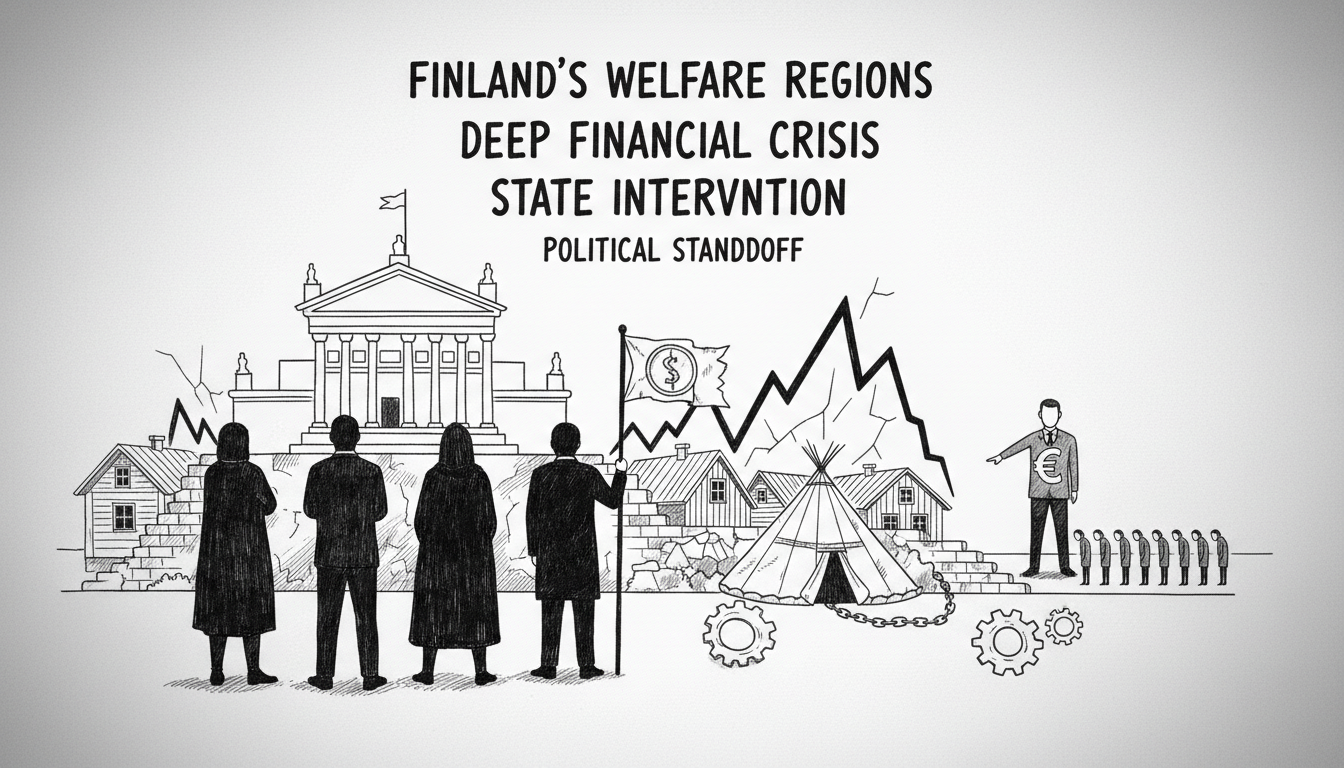Finland's welfare regions are splitting into three distinct categories as the country's social and healthcare reform faces mounting financial pressure. The regions now divide into those with deep deficits, those struggling to surface, and those managing their finances successfully. Opposition parties demand extended timelines for economic recovery while the government maintains strict fiscal discipline.
Three regions already entered state oversight procedures. Central Finland, Lapland, and Eastern Uusimaa face such accumulated deficits that covering them by the original deadline appears impossible. The average deficit per resident reaches approximately 396 euros nationwide, totaling 2.2 billion euros across Finland.
Juha Majanen, head of the Finance Ministry's department, emphasizes the deficit coverage obligation forms a core part of welfare regions' economic discipline. He acknowledges some validity to extending deadlines when cost growth remains moderate, but warns removing state pressure could eliminate regions' incentive to control spending.
Opposition parties made a rare joint appeal Thursday, urging the government to grant welfare regions additional time for economic recovery. Their concern stems from continued harsh cuts to social and healthcare services occurring across different regions this year. Many areas conduct personnel negotiations that now threaten nursing staff positions.
The previous government's funding law required welfare regions to cover accumulated operational deficits by the original deadline. Deficits occur when regional costs exceed state funding, which the state calculates based on population illness rates, resulting service needs, and population growth.
That government didn't anticipate the coverage requirement becoming impossible for many regions. All regions except Helsinki recorded deep deficits during previous years due to wage harmonization, salary increases, and inflation spikes from the Ukraine war. Additional peculiarities in the funding law completed a situation where regions now separate into three clear categories.
State assessment procedures provide extra coverage time but come at high cost for regions. Lapland and Central Finland already face protests against measures proposed by state-dominated review groups. The delegation from Kemi's West Ostrobothnia hospital appealed at Parliament House steps against converting their hospital into a health center, though prospects appear dim.
Originally conceived as an extreme measure and theoretical deterrent, assessment procedures now threaten seven to eight additional regions beyond the three already under state control. South Savo, Central Uusimaa, South Ostrobothnia, and Kymenlaakso might be next in line.
If assessment procedures prove ineffective, the next step involves examining problem areas for merger with other regions. Lapland already speculates about combining with North Ostrobothnia.
Beyond threatened regions, several areas with deep deficits from previous years now approach break-even points this year. The government currently prepares legislative changes allowing regions reaching at least zero results this year to receive extended deficit coverage deadlines.
This extension remains discretionary rather than automatic. Finance Ministry estimates suggest three to four regions would qualify for grace periods.
Beyond problem areas and intermediate groups, several regions perform better and could realistically cover previous deficits on schedule. These include at least North Ostrobothnia, Pirkanmaa, and Western Uusimaa.
Political motivations clearly influence this standoff. Opposition party leaders seeking extended deficit coverage deadlines understand well that welfare region problems will land in their laps immediately after parliamentary elections. The current government shows little interest in making that work easier.
This situation reveals fundamental tensions in Finland's welfare region model. The system struggles to balance local autonomy with financial responsibility while maintaining service quality. International readers should understand this represents Finland's most significant public sector reform in decades, testing how Nordic welfare states adapt to demographic and economic pressures.

